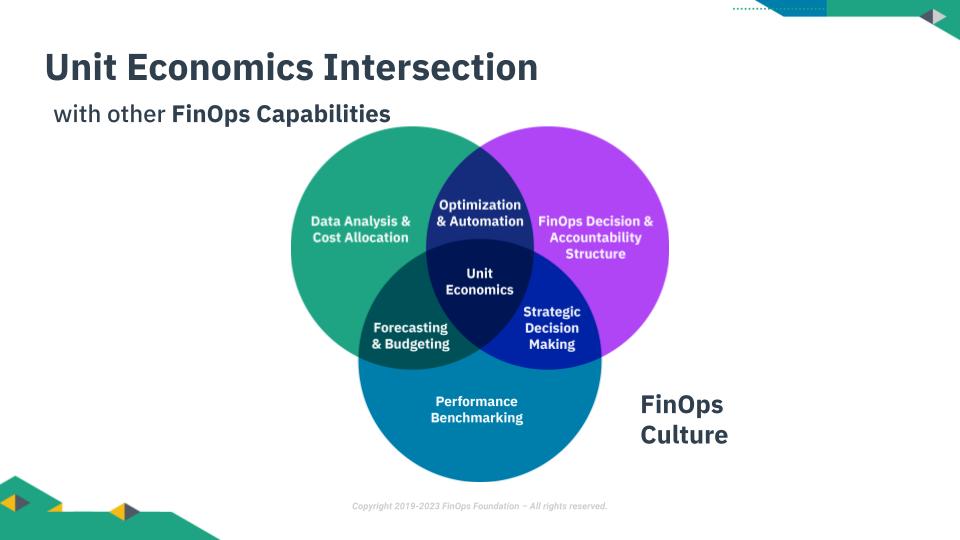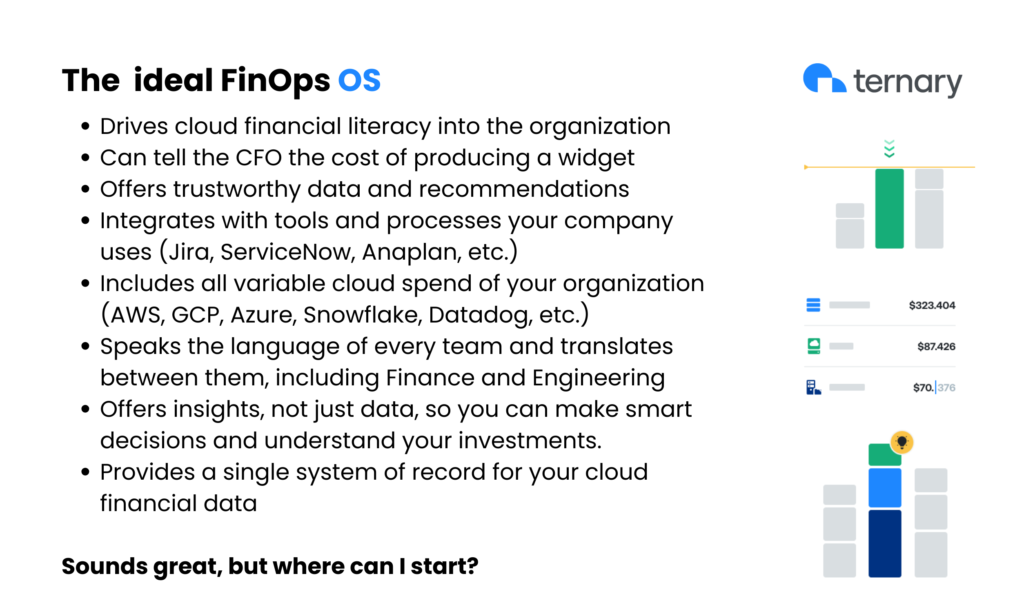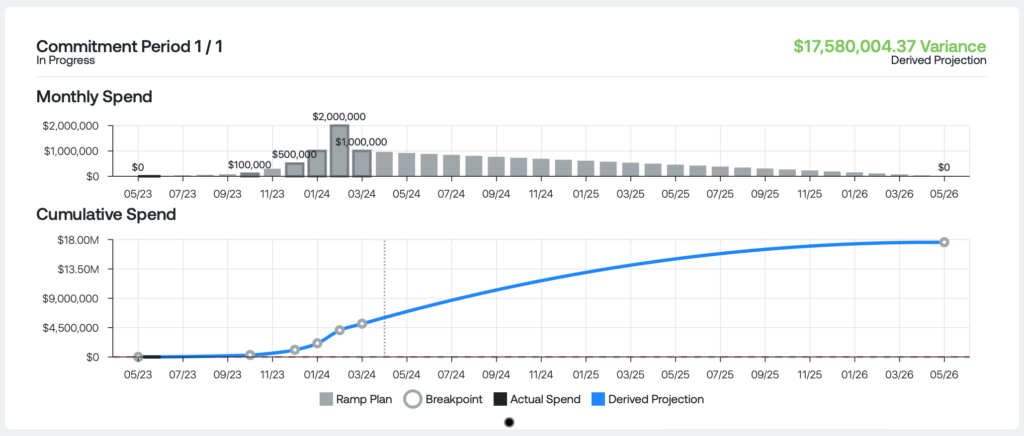Do you know exactly how much value your business derives from every penny of its cloud investments?
If you said no, you’re not alone. Unit economics is the practice of determining per-output costs to supply a product or service, and using that unit cost to drive application design and business decisions. For enterprise-level cloud investments, that practice grows increasingly important.
Yet the public cloud poses a unique set of challenges in accurately assessing unit economics. Why? Cloud billing data may arrive as millions of lines of data per provider, per day. Tagging and labeling are often not granular enough to directly associate service usage to applications. Fortunately, Ternary can help you solve this challenge—and maximize your organization’s bottom line. Read on to learn how.
The challenge of cloud unit economics
Unit economics is central to any FinOps practice, as illustrated in this image from the FinOps Foundation:

But businesses face challenges in implementing cloud unit economics, in two key ways. First, they cannot uniquely associate the costs of cloud services to the products or services they deliver. Second, they are not marrying business output metrics to those costs.
Unit economics calculations require a numerator and a denominator:

Because cloud costs are often blended (or shared) across applications and multiple cloud providers, many companies struggle to correctly define the numerator.
Example: how Ternary helps identify cloud costs for flight reservations
Let’s consider a hypothetical flight reservation system. It services end users booking flights via a website, and it also supports airline booking agents assisting customers dealing with travel disruptions. The application has a centralized inventory system with available routes and seats, but the web application and the agent portal use different cloud services.

There are two discrete cost models in play: travelers booking flights directly and employees (agents) supporting travelers.

And:

There are a few things to solve for:
- How can you split up the cost of the central inventory database, distributing some to each application, when it comes in from your cloud provider as a single charge?
- How can you get the number of traveler bookings and agent-assisted bookings into your cloud cost model?
- How can you export your cloud costs into an external system so you can blend those with non-cloud costs, like personnel?
Ternary can help with all three. In the first case, using a proportional reallocation model can take that monolithic cost of the central inventory database and split it into fractions, based on either a predetermined model (e.g., using a 60/40 split) or based on a number calculated on the fly (e.g., using the actual number of bookings made via the website versus those done by an agent).
On the second point, Ternary allows you to provide multiple external time series of business outputs to use as the denominators, which you can associate with the corresponding cost numerators. We’ll explore that further below.
Finally, many companies report costs to external systems of record. Rather than trying to incorporate non-cloud costs, a FinOps solution should expose those metrics to be included in the larger accounting system. Ternary offers API-based access to fully qualified, reallocated costs for precisely these use cases.
How to bring per-unit data into Ternary
Specifying the number of units produced is simple, in Ternary. (In the above example, “number of units produced” may be either the number of traveler bookings or the number of agent bookings.) You can simply ingest a Datadog API feed or a time-series table. Just point Ternary to your data source, showing how many units were produced in a given time period (under “Metric,” in the screenshot below). Then specify the unit economics you’d like Ternary to analyze (in this case, cost per reservation).
How Ternary reveals unit cost insights
Consider these insights from the Ternary Reporting Engine about a hypothetical airline’s unit economics. The airline is using a cloud application we’ll call Endeavor. Application cost (the numerator, blue line in the graph below) remained fairly consistent throughout the week. But the number of reservations booked (purple line) varied widely, spiking during the week and plunging on weekends:


You can see from the second graph that, using this application, the airline’s cost per reservation (yellow line) was about 10x higher on weekends than it was on weekdays (1 cent vs. just under 0.1 cent each). The dropoff in reservation activity over the weekend, when paired with steady cloud costs, accounted for these dramatic swings in unit cost. Also notice those beginning-of-month spikes. Those represent the reallocated support and marketplace charges. We’ll cover that in a subsequent blog post.
Given these insights, the airline might want to spin down cloud resources over the weekends, when customer activity drops—thereby improving its margin per reservation. For companies operating on small margins, such calculations are particularly important. In fact, they can make the difference between business viability and failure.
Implementing cloud unit economics fosters FinOps maturity
Ternary is purpose-built to help you use unit economics to boost profitability, save money, and foster collaboration within and between teams. Empowered by these insights into your company’s cloud costs to produce a single unit of product, you can start to answer the most critical questions business leaders struggle with.
Dive into how Ternary can drive efficiency in your organization’s cloud spending.




